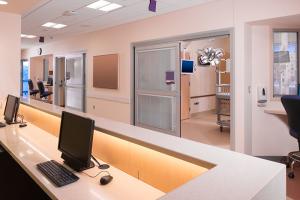NFPA reaches final votes on key health care, life safety code changes
NFPA reaches final votes on key health care, life safety codes
National Fire Protection Association (NFPA) members voted on several proposed changes to 13 codes at its technical meeting June 7, including NFPA 99: Health Care Facilities Code and NFPA 101: Life Safety Code.
Although the approved changes are for the codes’ 2018 editions, the American Society for Healthcare Engineering states that code development is an ongoing process and often provides clarification on the original intent of the code.
Some of the key votes include:
- Two proposed changes to NFPA 101 that would have stopped efforts to expand maximum compartment size to 40,000 square feet to allow for more single-bed hospital designs failed.
- Minor changes to NFPA 99 that require testing criteria for furnishing and mattresses that are consistent with industry standards passed.
- A motion under NFPA 101 that would have allowed rooms with boiler, mechanical and electrical equipment to be used for some storage when the room is protected per NFPA 101 requirements for storage rooms failed.
See the complete voting list for NFPA 99 and NFPA 101 on the association’s website.
FGI clarifies guidelines for ducted systems
The Facility Guidelines Institute issued an updated errata sheet to its 2010 Guidelines for Design and Construction of Health Care Facilities regarding return-air systems.
The errata clarifies the intent of sections 2.1-8.2.4.1 and 3.1-8.2.4.1 which required fully ducted returns in all patient care areas in hospitals and outpatient facilities. A Guidelines user pointed out conflicts between the section and ASHRAE 170, which only requires fully ducted returns in spaces with pressure requirements.
The updated errata sheet removes the requirement for return-air systems and directs readers to ASHRAE 170, Section 6.7.1, which states :“Spaces … that have required pressure relationships shall be served by fully ducted systems.”
Joint Commission opposes proposed CMS rule to make survey reports public
The Joint Commission submitted public comment to the Centers for Medicare & Medicaid Services (CMS), expressing concern over a proposal to require all accrediting organizations with Medicare deeming authority to make all survey reports of all organizations they accredit — including reports on full accreditation, deficiency, follow-up and complaint surveys, and plans of correction — available on their public websites.
The Joint Commission says that although it supports making reliable and valid quality data available to the public and does do so through its own program, it argues that survey reports are not health care quality data, but instead tools for health care providers to make quality improvements.
“The proposed CMS rule on private accrediting organizations would have the opposite of its intended effect and make it more difficult to assure safe and high-quality care for patients, not less,” the Joint Commission writes. “Releasing the information we collect on hospitals and other health care organizations would make providers less candid about their weaknesses on our surveys; it would chill the open and confidential dialogue that is the foundation of our improvement efforts. We all want better patient care, but this is not the way to achieve it.”
One-third of heater-cooler devices may be contaminated, research shows
Thirty-seven percent of the heater-cooler devices assessed by researchers between July 2015 and December 2016 tested positive for Mycobacterium chimaera.
Results of the research were presented at the 44th Annual Conference of the Association for Professionals in Infection Control and Epidemiology. The Food and Drug Administration and the Centers for Disease Control and Prevention previously issued safety warnings regarding heater-cooler devices that are used during open-heart surgery.
John Rihs, vice president of laboratory services at Special Pathogens Laboratory in Pittsburgh, says “the extent of contamination from such a rare organism in multiple units from all over the country was surprising. Some devices remained positive for M. chimaera for months, indicating that disinfection can be difficult and routine testing is advisable.”
The researchers also found Legionella and fungi in the devices.
“These results highlight the importance of monitoring the decontamination and maintenance schedules of these devices to minimize the risk of patient harm,” says Linda Greene, R.N., MPS, CIC, FAPIC, 2017 APIC president. “Hospitals must follow the cleaning and disinfection instructions provided in the manufacturer’s device labeling, as well as updated communications from the FDA and CDC.”




